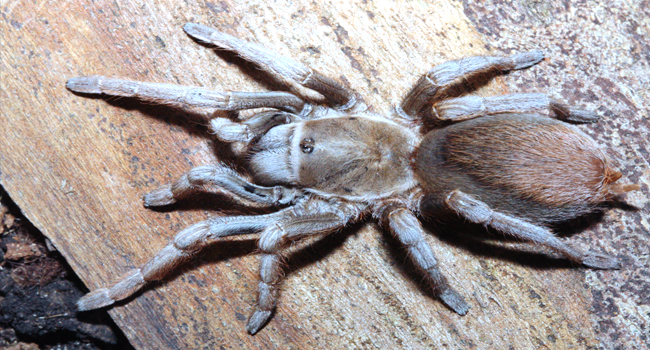Introduction
The amazing size, distinct mannerisms, and stunning looks of tarantulas have captivated the attention of many people. They are very intriguing creatures. However, these incredible arachnids face numerous threats in the wild, making conservation efforts crucial to ensure their survival. In this article, we will explore the world of tarantulas, their importance, and the various challenges they encounter in their natural habitats. We will also delve into the vital conservation efforts that are in place to protect these amazing arachnids.
The Enigmatic World of Tarantulas
- Understanding Tarantulas
Tarantulas are a diverse group of large, hairy spiders belonging to the family Theraphosidae. These arachnids can be found in various parts of the world, with the highest diversity in tropical and subtropical regions.
- Impressive Biodiversity
There are over 900 recognized tarantula species, and each one exhibits unique characteristics, behaviors, and habitats. These spiders are diverse in their forms, sizes, and colors, ranging from the eye-catching Mexican Red Knee Tarantula to the elusive Goliath Bird eater.
The Challenges They Face
- Habitat Destruction
One of the primary threats to tarantulas is habitat destruction. Deforestation, urban development, and agricultural expansion have led to the loss of their natural habitats, pushing these creatures to the brink.
- Illegal Pet Trade
The demand for exotic pets, including tarantulas, has led to illegal collecting and trafficking of these spiders. This activity poses a significant threat to their populations, as it disrupts their ecosystems and reduces their numbers in the wild.
- Climate Change
Climate change is altering the environmental conditions that tarantulas have adapted to over millions of years. Variations in humidity and temperature can negatively impact their chances of surviving and procreating.
- Predators
Tarantulas have their fair share of predators, including birds, mammals, and other arachnids. Increased predation pressure due to environmental changes can further endanger these creatures.
Tarantula Conservation Efforts
- Research and Monitoring
Conservationists and scientists are conducting extensive research to better understand tarantula species and their ecological needs. This knowledge is crucial for designing effective conservation strategies.
- Protected Areas
The establishment of protected areas and reserves can provide a safe haven for tarantulas. These areas help mitigate habitat destruction and provide the necessary space for their survival.
- Education and Awareness
Raising awareness about the importance of tarantulas and their role in ecosystems is a key component of conservation efforts. Policies and attitudes regarding their protection are greatly influenced by public opinion.
- Controlling the Pet Industry
Tarantula exploitation may be greatly decreased by enforcing laws and stiff penalties for the illicit pet trade. Promoting responsible ownership and breeding can also contribute to their conservation.
The Role of Tarantulas in Ecosystems
- Predator-Prey Dynamics
Tarantulas are skilled predators, helping to control insect populations in their habitats. Their presence maintains the balance between prey and predator species, preventing outbreaks of pests and ensuring the health of the ecosystem.
- Soil Aeration
Some tarantulas are burrowing species, and their digging activities help aerate the soil. This enhances nutrient circulation and benefits plant life in the area.
- Indicator Species
Tarantulas can serve as indicators of environmental health. Their existence or nonexistence in an ecosystem might provide important details about the general ecological conditions.
The Importance of Biodiversity
- Genetic Diversity
Each tarantula species carries a unique genetic code, contributing to the overall genetic diversity of our planet. Preserving these species is essential to maintaining genetic variety.
- Medicinal Potential
Tarantula venom contains complex compounds that could hold the key to new medicines and treatments. By protecting these arachnids, we may discover breakthroughs in the field of medicine.
How You Can Get Involved
- Support Conservation Organizations
Many organizations are dedicated to tarantula conservation. By donating to or volunteering with these groups, you can contribute to their vital work.
- Educate Others
Spreading knowledge about the importance of tarantulas and the threats they face is crucial. Encourage your friends and family to join the cause.
- Responsible Pet Ownership
If you are a tarantula enthusiast, ensure that your pets are legally acquired and well-cared for. Responsible ownership helps combat the illegal pet trade.
- Engage in Citizen Science
Many citizen science programs allow you to contribute to tarantula conservation efforts through data collection and monitoring.
Tarantula Conservation Success Stories
- The Mexican Red Knee Tarantula
The Mexican Red Knee Tarantula is one of the most iconic tarantula species. Because of its widespread use in the pet trade, conservation efforts have concentrated on it. Thanks to these efforts, populations of this species are stabilizing in the wild.
- Tarantulas in the United States
In the United States, some tarantula species, such as the Texas brown tarantula have faced challenges due to habitat destruction and collecting for the pet trade. Conservation initiatives are making strides in protecting these arachnids and their environments.
The Future of Tarantula Conservation
- Research Advancements
Continued research into tarantula behavior, ecology, and genetics will provide a more comprehensive understanding of these arachnids and their requirements for survival.
- Sustainable Practices
Promoting sustainable and ethical practices within the pet trade industry is essential. Captive breeding programs can help reduce the demand for wild-caught tarantulas.
- International Collaboration
Given the global distribution of tarantulas, international collaboration is crucial. Working together on conservation strategies will have a more significant impact on protecting these arachnids.
Your Role in Tarantula Conservation
- Raise Awareness
Share your newfound knowledge about tarantula conservation with your social circle, encouraging more people to get involved in preserving these fascinating creatures.
- Support Conservation Efforts
Donate to reputable conservation organizations dedicated to protecting tarantulas and their habitats. Your monetary assistance can have a big impact.
- Report Illegal Activity
If you come across illegal collecting or trading of tarantulas, report it to the appropriate authorities. You can help combat the illegal pet trade.
Tarantula Conservation: A Global Effort
- International Initiatives
Conserving tarantulas isn’t confined to a single country; it’s a global effort. Organizations, researchers, and enthusiasts from around the world are coming together to safeguard these incredible arachnids. International conventions and agreements are being established to ensure that tarantulas receive the protection they deserve.
- Ecotourism and Education
In many regions where tarantulas are native, ecotourism has emerged as an effective means of preserving both the spiders and their habitats. Visitors can learn about these fascinating creatures while providing economic incentives for local communities to support conservation.
Future Challenges and Solutions
- Continued Urbanization
As urban areas expand, natural habitats shrink. It’s imperative to find ways to strike a balance between development and conservation to ensure that tarantulas have the space they need.
- Climate Change Adaptation
With climate change altering the environments tarantulas have adapted to, conservationists are studying how these arachnids are coping and what measures can be taken to help them survive in a changing world.
Tarantula Conservation and You
- Take Action
Whether you’re a passionate tarantula enthusiast or just beginning to appreciate these creatures, there are numerous ways you can contribute to their conservation. Be it through financial support, advocacy, or education, your involvement matters.
- Spread the Word
An effective weapon in the struggle to save tarantulas is knowledge. Share this article, engage in conversations, and use your voice to educate others about the importance of these arachnids.
- Stay Informed
The field of conservation is ever-evolving. Stay informed about the latest developments in tarantula conservation and adapt your support accordingly.
Conclusion
Tarantulas are remarkable arachnids that deserve our attention and protection. They play essential roles in their ecosystems and provide valuable insights into the natural world. With concerted efforts in conservation, we can ensure that these amazing creatures continue to thrive for generations to come.
FAQs
-
Why are tarantulas important in their ecosystems?
Tarantulas play a vital role in controlling insect populations, contributing to the balance of their ecosystems.
-
What can individuals do to help with tarantula conservation?
You can support conservation organizations, avoid purchasing illegally collected tarantulas, and educate others about the importance of these spiders.
-
Are tarantulas dangerous to humans?
While some tarantulas possess venom, they are generally not considered dangerous to humans.
-
How can I differentiate between a tarantula and other spiders?
Tarantulas are known for their large size, hairy appearance, and unique leg span, which can help you distinguish them from other spiders.
-
What can we learn from studying tarantulas?
Studying tarantulas provides insights into biodiversity, animal behavior, and the importance of conserving unique and threatened species.







